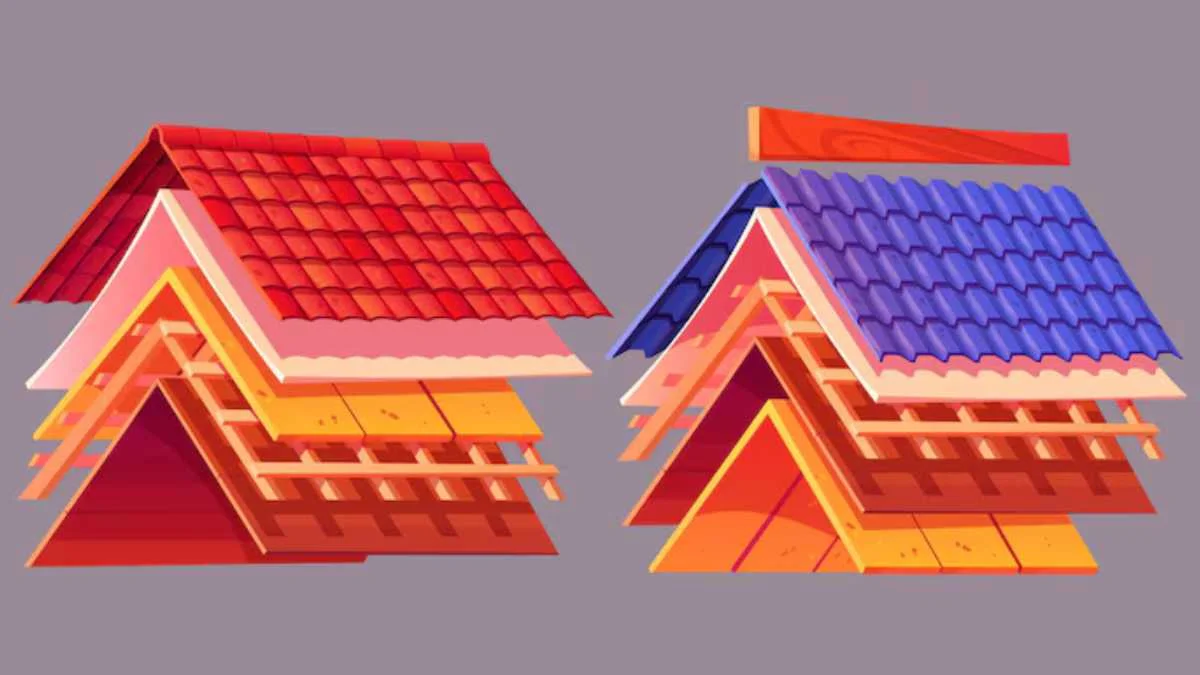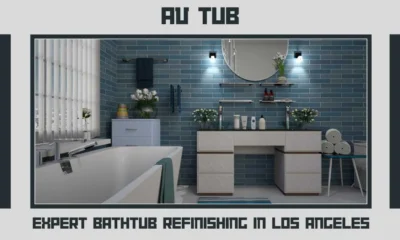HOME IMPROVEMENT
Roofing for Different Architectural Styles: Matching Form with Function

Architecture isn’t just about aesthetics—it’s a dialogue between form and function. And few elements of a home say more about that dialogue than the roof. While roofing protects a house from the elements, it also defines the silhouette, supports energy efficiency, and reinforces the architectural identity of the structure. From sleek modern minimalism to classic colonial charm, each architectural style demands a thoughtful approach to roofing materials, slope, shape, and detailing.
This guide explores how roofing choices can harmonize with—and elevate—various home styles, while delivering long-term protection and performance.
Colonial Homes: Tradition Rooted in Symmetry
Colonial-style homes are characterized by symmetry, gabled roofs, and a sense of permanence. Typically built with a centered front door and evenly spaced windows, they pair best with simple, durable roofing materials that reinforce their orderly geometry.
Ideal roofing materials:
- Architectural asphalt shingles: Their dimensional quality adds texture without disrupting symmetry.
- Wood shakes: Traditional and textured, they offer historic authenticity (though higher maintenance).
Color palette: Dark gray, deep brown, or weathered wood tones often accentuate colonial roots.
Functionally, these roofs benefit from modern underlayments and ventilation systems to reduce moisture buildup, especially in homes with limited attic airflow.
Craftsman Bungalows: Low-Pitched and Detail-Driven
Craftsman homes are celebrated for their handcrafted appearance, overhanging eaves, and exposed rafters. Their low-pitched roofs demand materials that lie flat yet contribute to the overall character.
Best fits include:
- Composite shingles: Lightweight and easy to mold into subtle slopes.
- Metal roofing: Especially standing seam styles, offering a clean contrast to wooden details.
Craftsman homes often feature wide porches and dormers. Roofing systems need to address those architectural complexities with flashing and custom gutters to prevent water intrusion in vulnerable corners.
Modern and Contemporary: Clean Lines, Big Statements
Minimalist, angular, and innovative—modern architecture thrives on geometric roofing. Many of these homes employ flat or low-slope roofs that emphasize clean planes and wide spans.
Recommended materials:
- TPO or EPDM membrane roofs: Ideal for flat roof designs.
- Standing seam metal roofs: Provide a refined, industrial look that matches sleek facades.
- Green roofing systems: For flat-roofed contemporary homes in urban environments.
Modern homes often integrate skylights, solar panels, and parapet walls. Roofing must support these features while ensuring energy efficiency and drainage—critical for flat or nearly flat roofs.
Expert roofers in Quincy notes that these designs often benefit from high-performance membranes that reflect sunlight and resist pooling, especially in warmer regions.
Mediterranean and Spanish Revival: Timeless Warmth
Characterized by stucco walls, arched windows, and clay tile roofs, Mediterranean-style homes need materials that can echo historic elegance while handling heat and occasional heavy rain.
Top roofing options:
- Clay or concrete barrel tiles: Evoke Old World charm and provide excellent heat resistance.
- Synthetic tiles: Lightweight versions of classic terracotta, easier to install and maintain.
These roofs often feature complex curves and ridges. Proper sealing and underlayment are essential to prevent leaks and preserve thermal integrity.
Tudor Revival: Steep, Storybook Peaks
Tudor-style homes look like something out of a fairytale—steeply pitched roofs, gables upon gables, and decorative half-timbering. The roofing on these homes must be as bold and textured as the rest of the architecture.
Recommended materials:
- Slate or synthetic slate: Perfectly mirrors historical authenticity with modern longevity.
- Dimensional shingles: Offer varied color and depth to complement stone and brick exteriors.
Due to the steep slopes, these roofs shed snow and water easily, making them ideal in colder climates. However, extra attention must be given to flashing around intersecting planes and chimneys.
Ranch and Mid-Century Modern: Stretching the Horizontal
These single-story homes emphasize length and integration with the landscape. Rooflines are typically long and low, requiring materials that complement the horizontal orientation.
Preferred materials:
- Rolled asphalt roofing: Useful for low-slope sections.
- Gravel or tar-and-gravel roofing systems: Popular in mid-century designs.
- Metal roofing panels: Sleek and linear, perfect for enhancing modernist silhouettes.
Ventilation and waterproofing are especially important for these designs due to the broad, shallow pitch. Surge Exteriors has observed that adding reflective coatings or membranes can improve cooling performance in ranch-style homes.
Victorian and Queen Anne: Highly Detailed and Dynamic
Towers, turrets, and decorative trim define these ornate homes. Victorian roofs are steep, multi-faceted, and often colorfully coordinated with the rest of the home.
Top choices for these lively roofs:
- Slate or slate-look shingles: Emulate the charm of 19th-century construction.
- Decorative shingles (fish scale or scalloped styles): Enhance visual interest.
Because of the numerous angles and flourishes, these roofs require precise flashing, well-placed valleys, and durable underlayments. Proper detailing around dormers and towers is essential to prevent leaks.
Energy Efficiency and Material Performance
Regardless of style, every roof must meet modern expectations for performance. Energy-efficient materials such as cool shingles, insulated panels, or reflective membranes can be adapted to virtually any design with the right installation approach.
Key considerations across styles:
- Ventilation: Crucial for preventing moisture buildup and regulating attic temperature.
- Insulation compatibility: Works hand-in-hand with roofing materials to reduce HVAC strain.
- Weather resistance: Choosing the right material for your regional climate ensures longevity.
Regional Climate: An Overlooked Style Influence
While aesthetics matter, climate should always inform roofing choices. For example:
- Coastal regions: Favor rust-resistant metal and storm-rated shingles.
- Hot climates: Benefit from light-colored or reflective roofing materials.
- Cold zones: Need materials that handle snow loads and resist freeze-thaw damage.
A roofing material must not only look right—it has to perform under your local conditions. Many traditional styles can be modernized using regionally appropriate innovations that maintain historical appearance without sacrificing protection.
Final Thoughts
Selecting the right roofing system goes far beyond curb appeal. It’s an opportunity to respect architectural history while embracing durability, performance, and sustainability. The best roofs honor the visual language of the home while solving practical challenges such as energy conservation, weather protection, and longevity.
For homeowners exploring new construction or planning a roof replacement, matching materials to architectural style is about more than just good looks—it’s about ensuring that each element of the home speaks the same design language while standing up to nature’s tests.
Surge Exteriors recognizes how critical this balance is and helps homeowners pair form with function—delivering roofing solutions that not only look beautiful but perform exceptionally well across time and season.
-

 BIOGRAPHY7 months ago
BIOGRAPHY7 months agoBehind the Scenes with Sandra Orlow: An Exclusive Interview
-

 HOME1 year ago
HOME1 year agoDiscovering Insights: A Deep Dive into the //vital-mag.net blog
-

 HOME1 year ago
HOME1 year agoSifangds in Action: Real-Life Applications and Success Stories
-

 BIOGRAPHY1 year ago
BIOGRAPHY1 year agoThe Woman Behind the Comedian: Meet Andrew Santino Wife




























